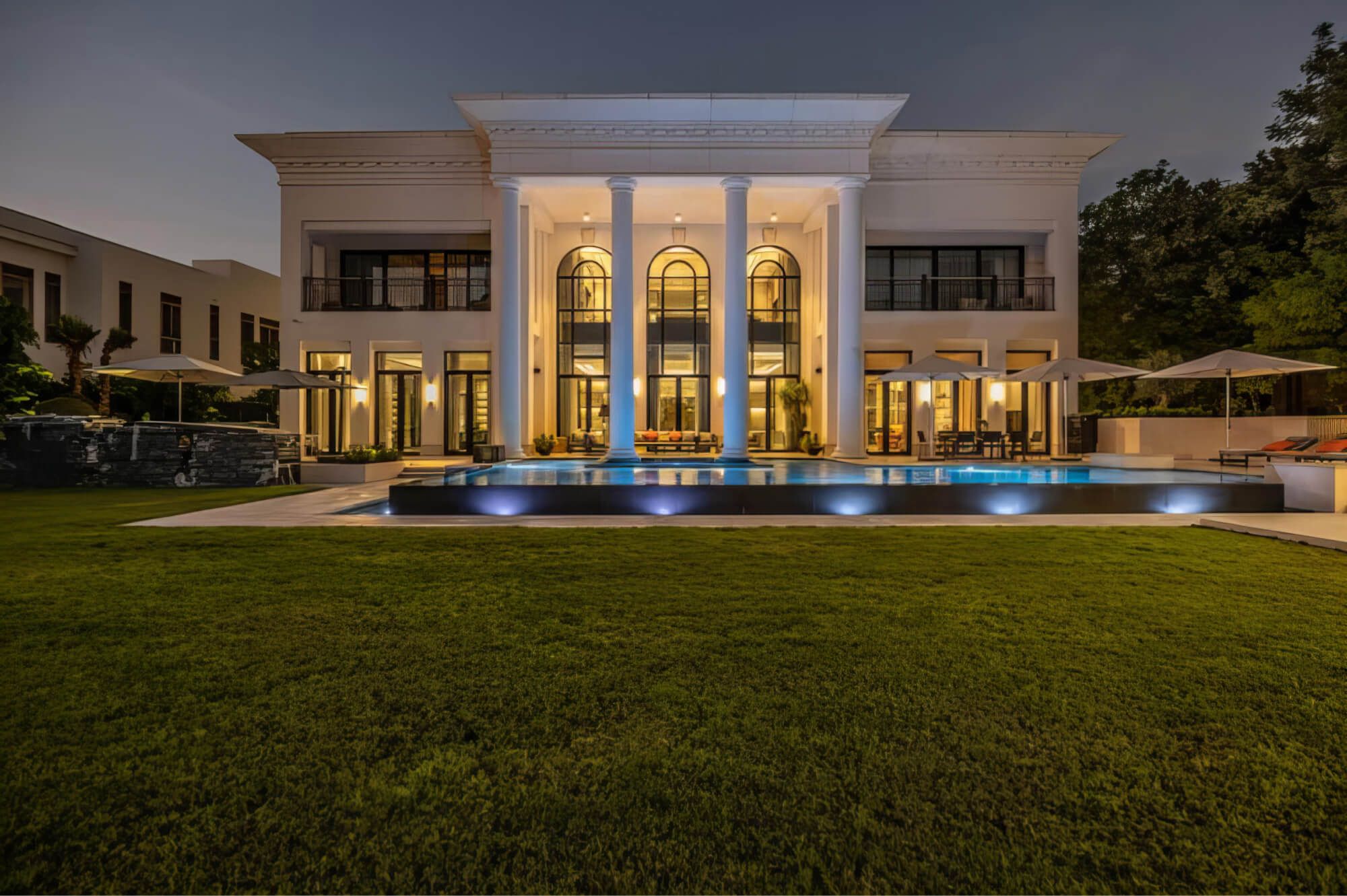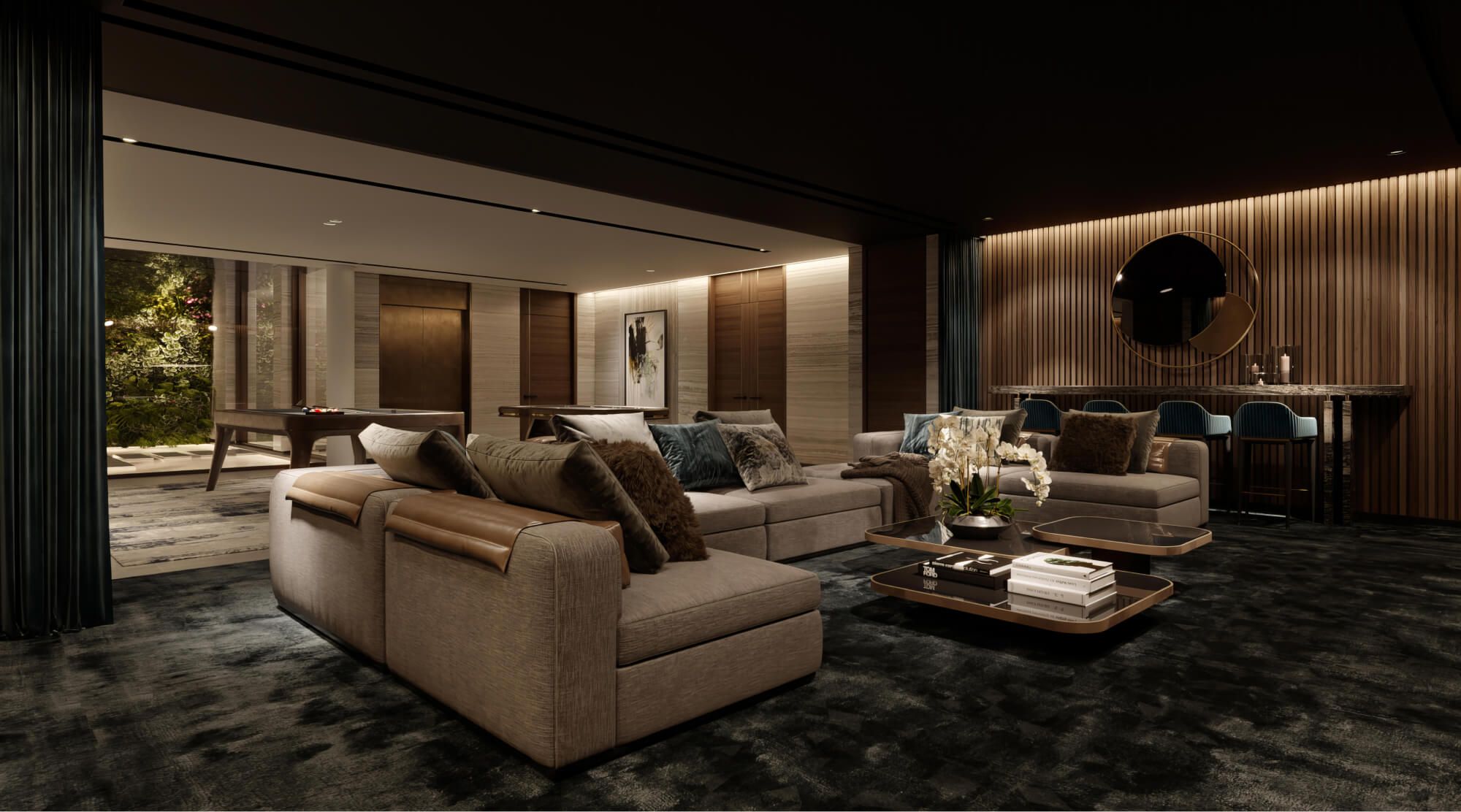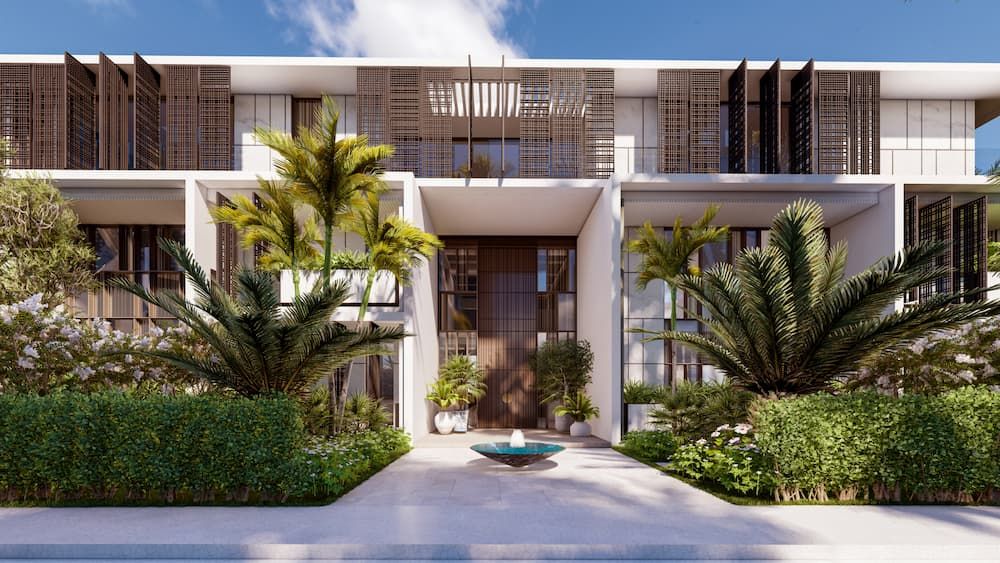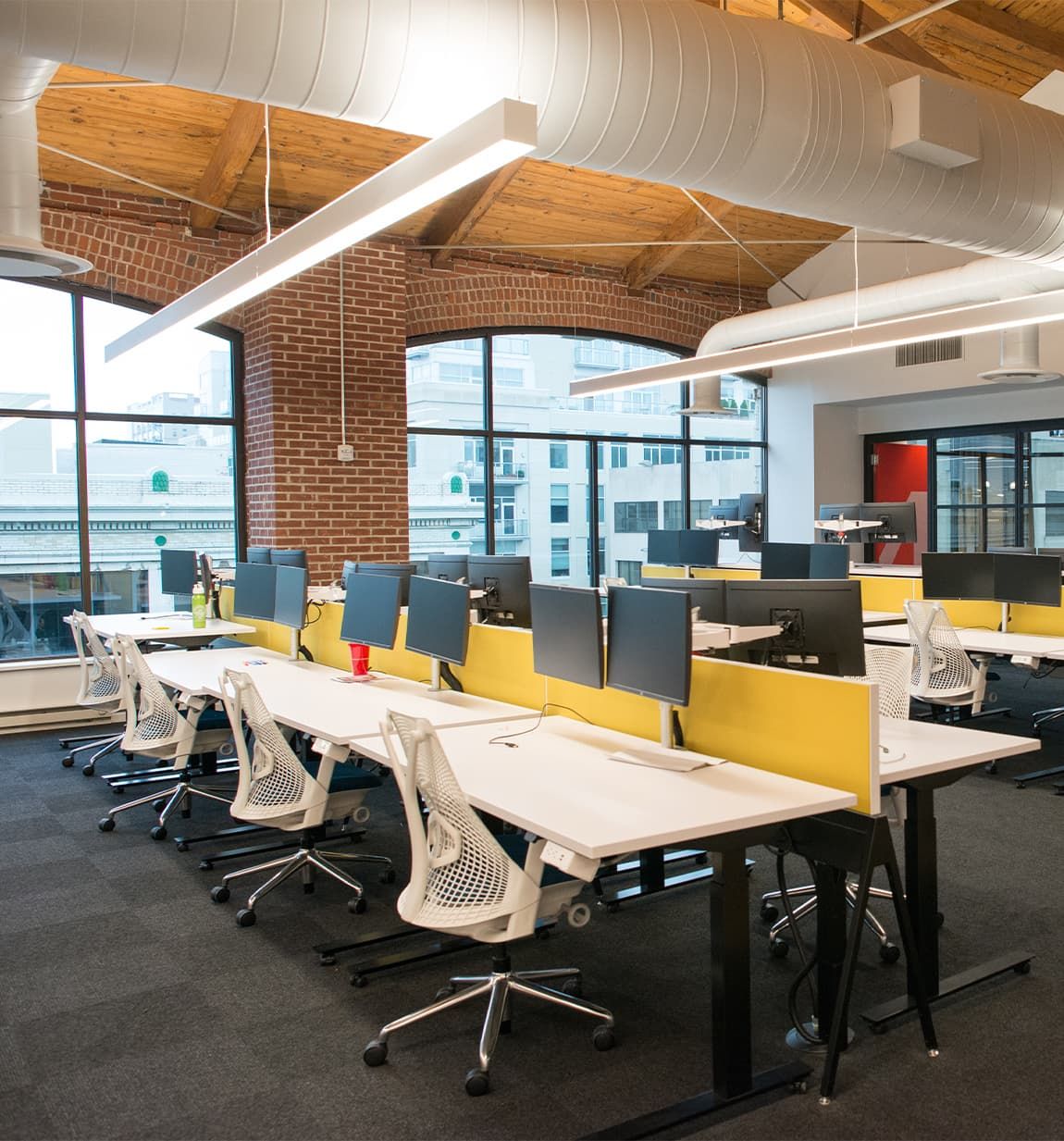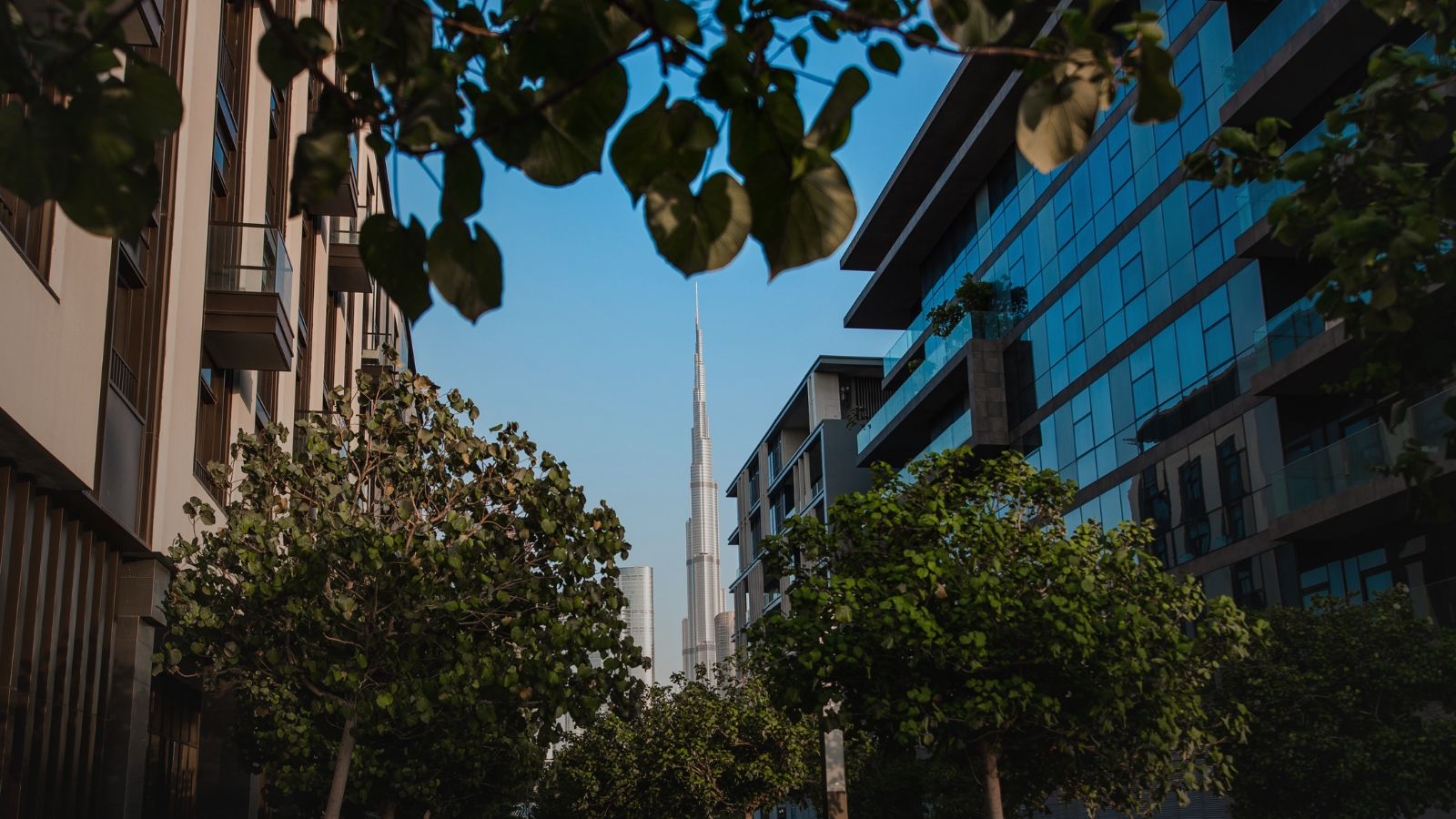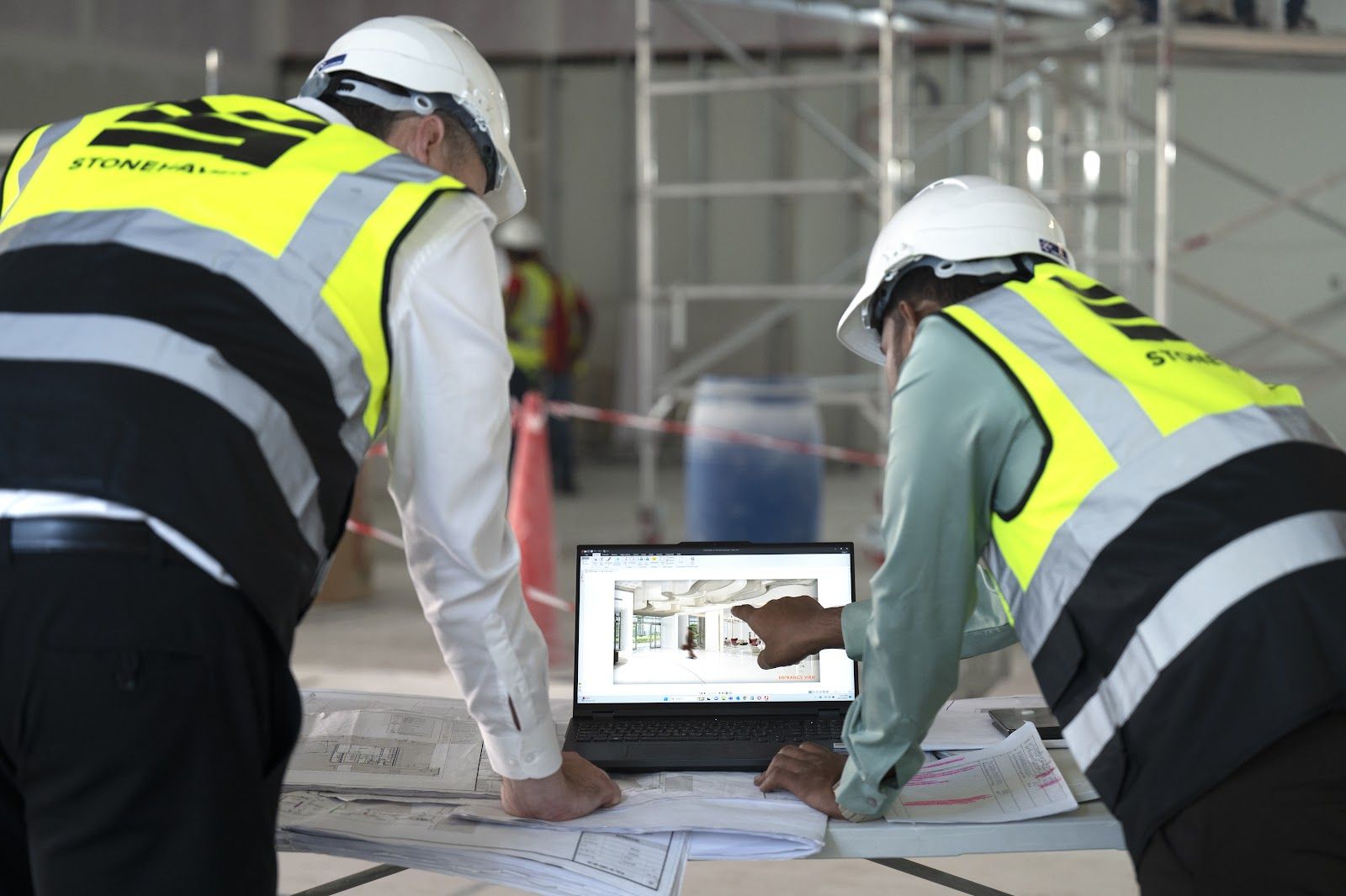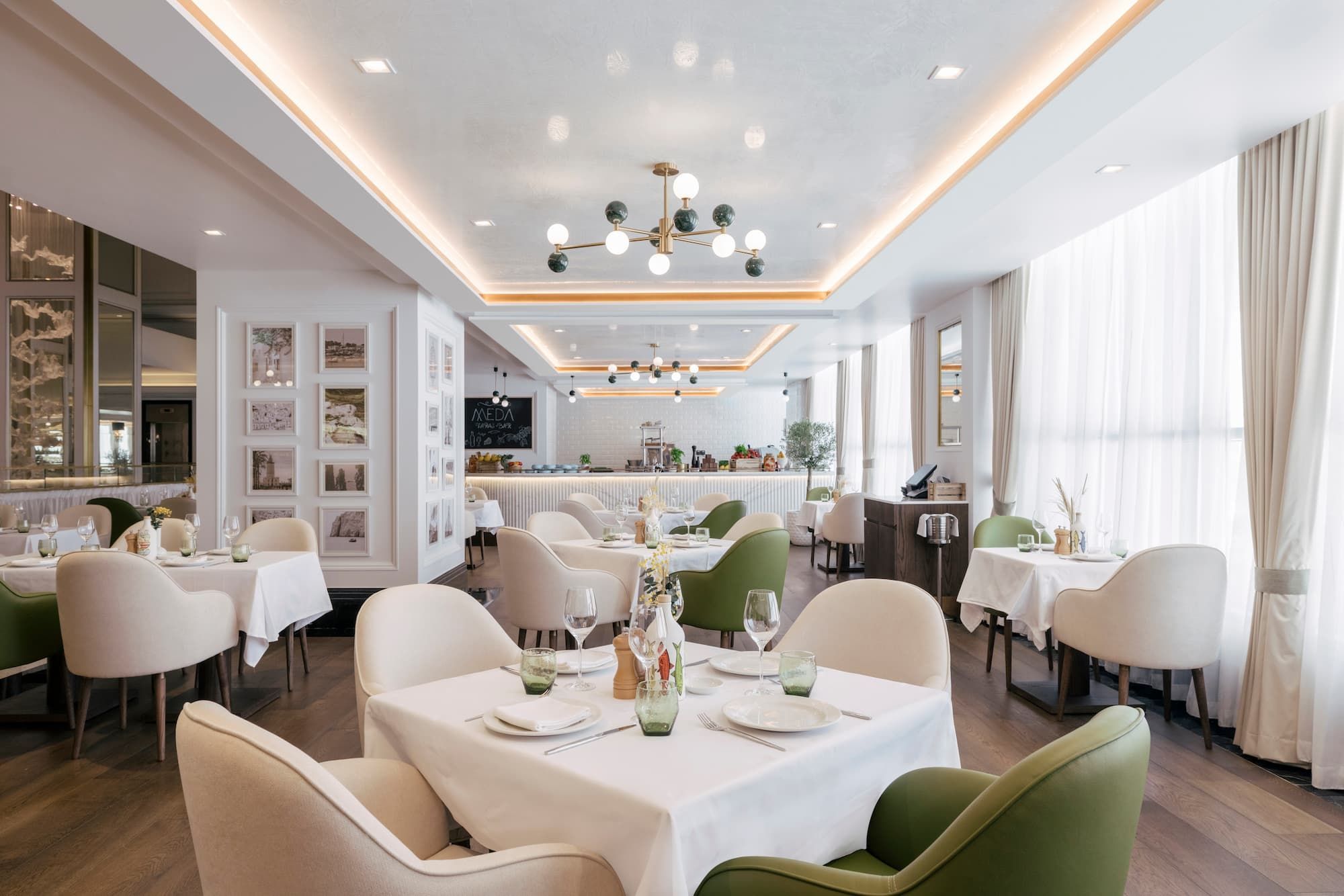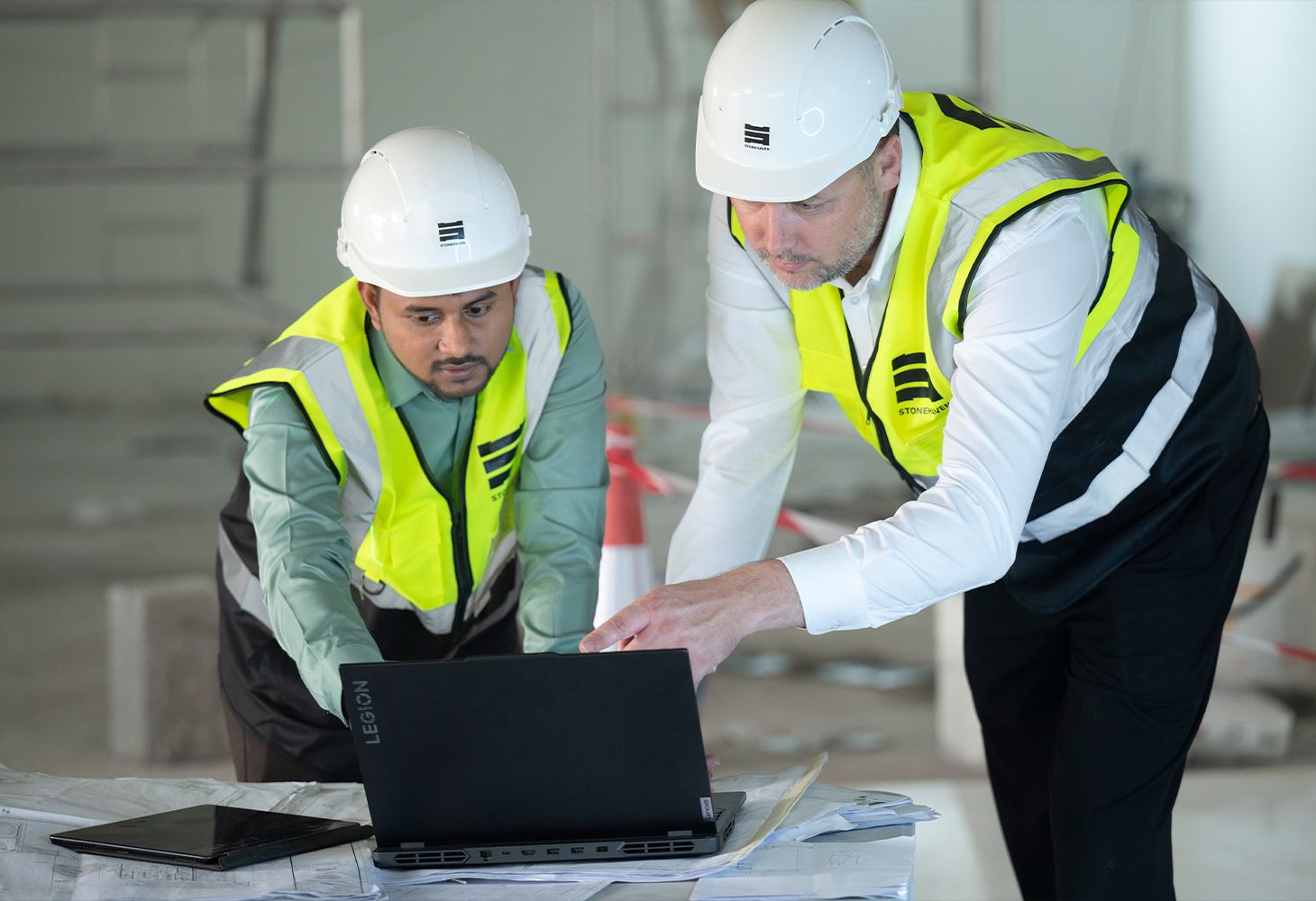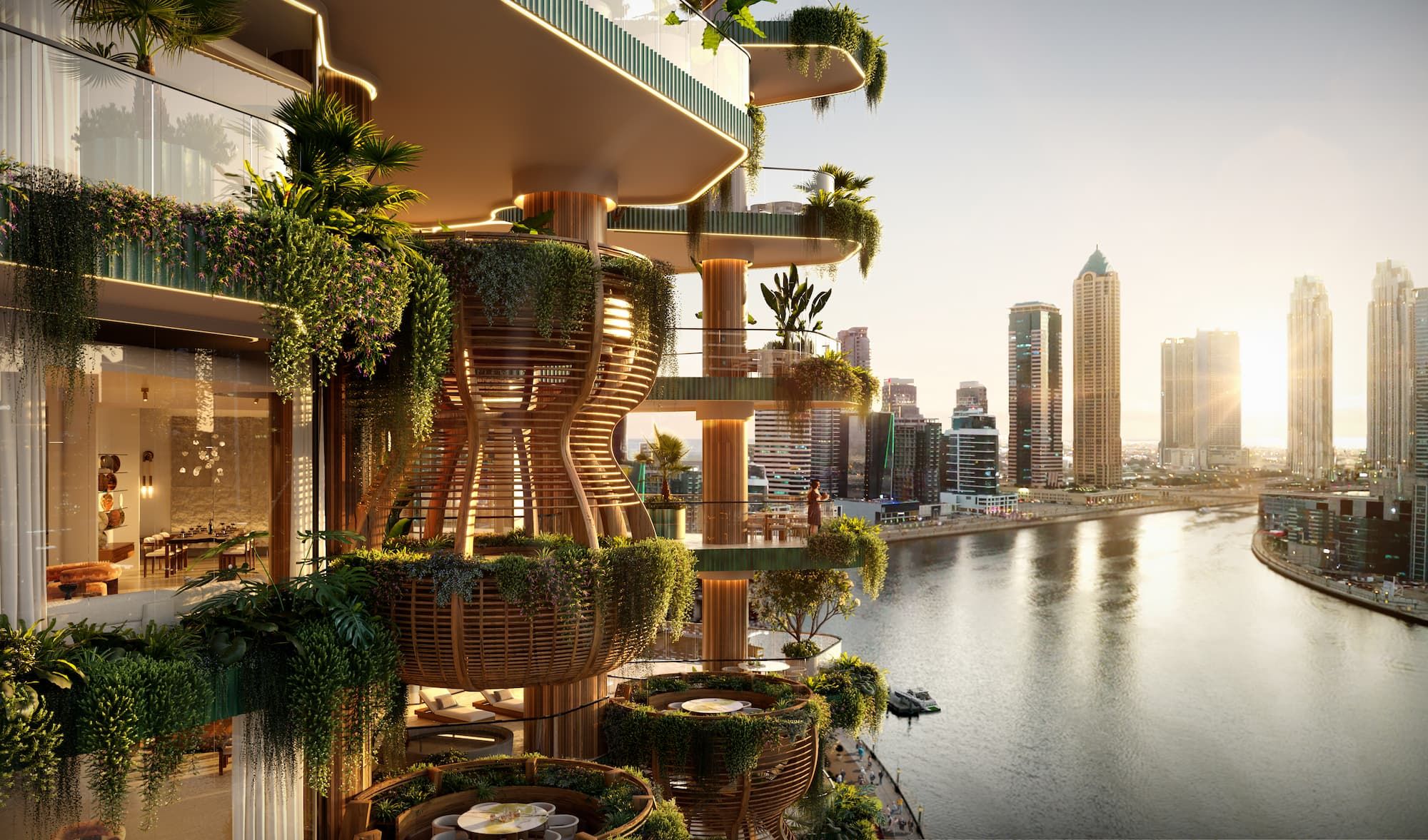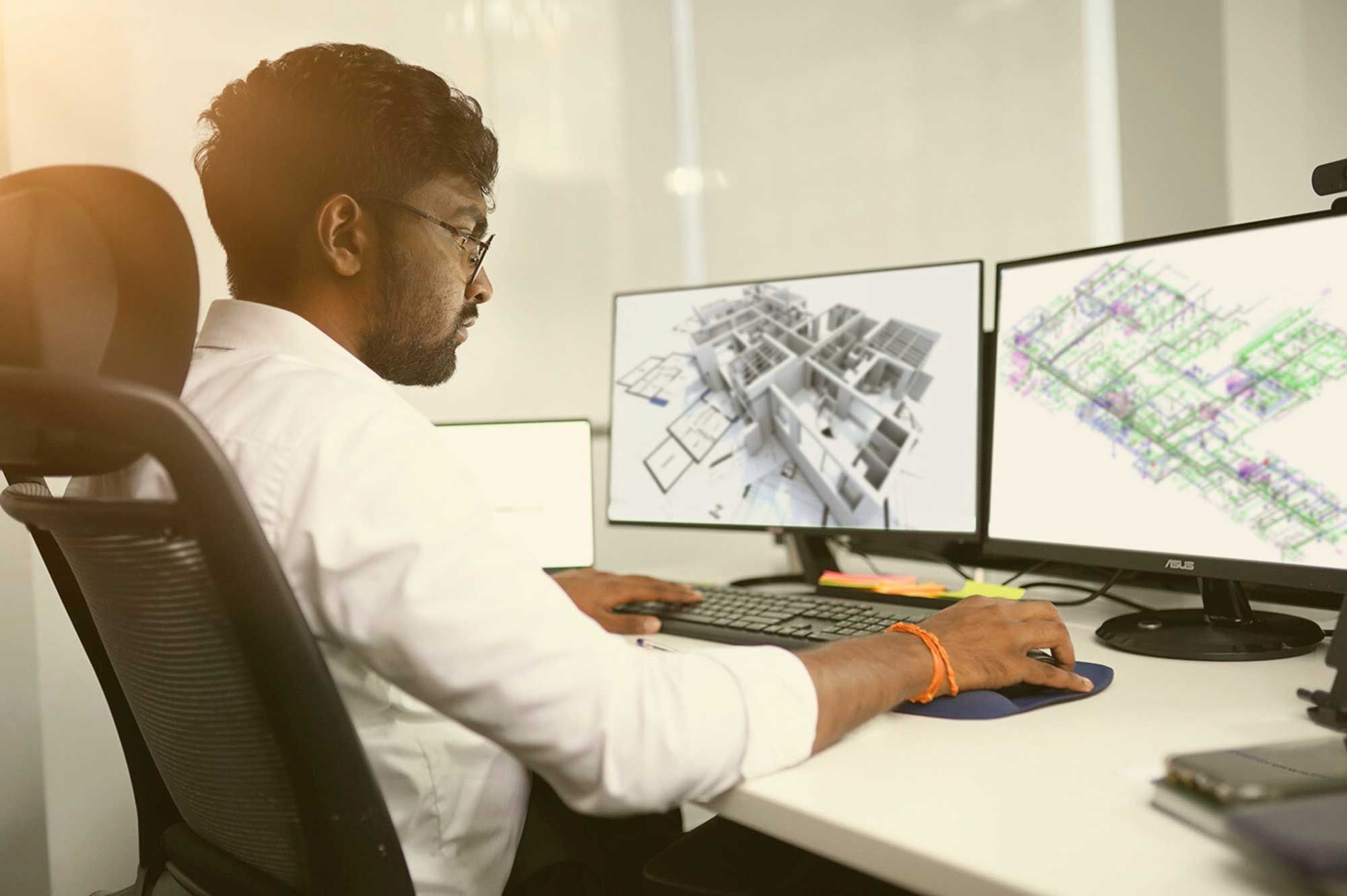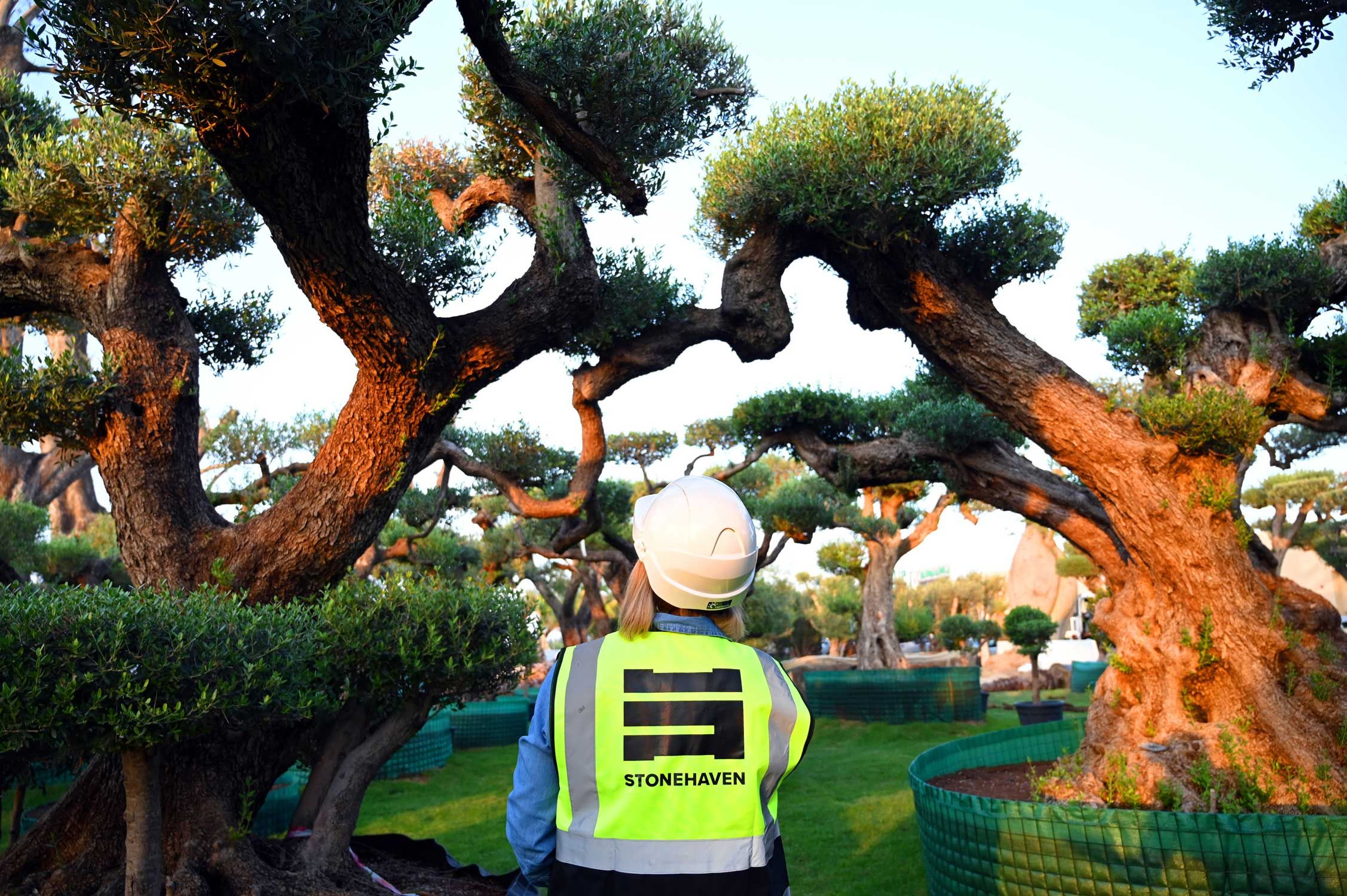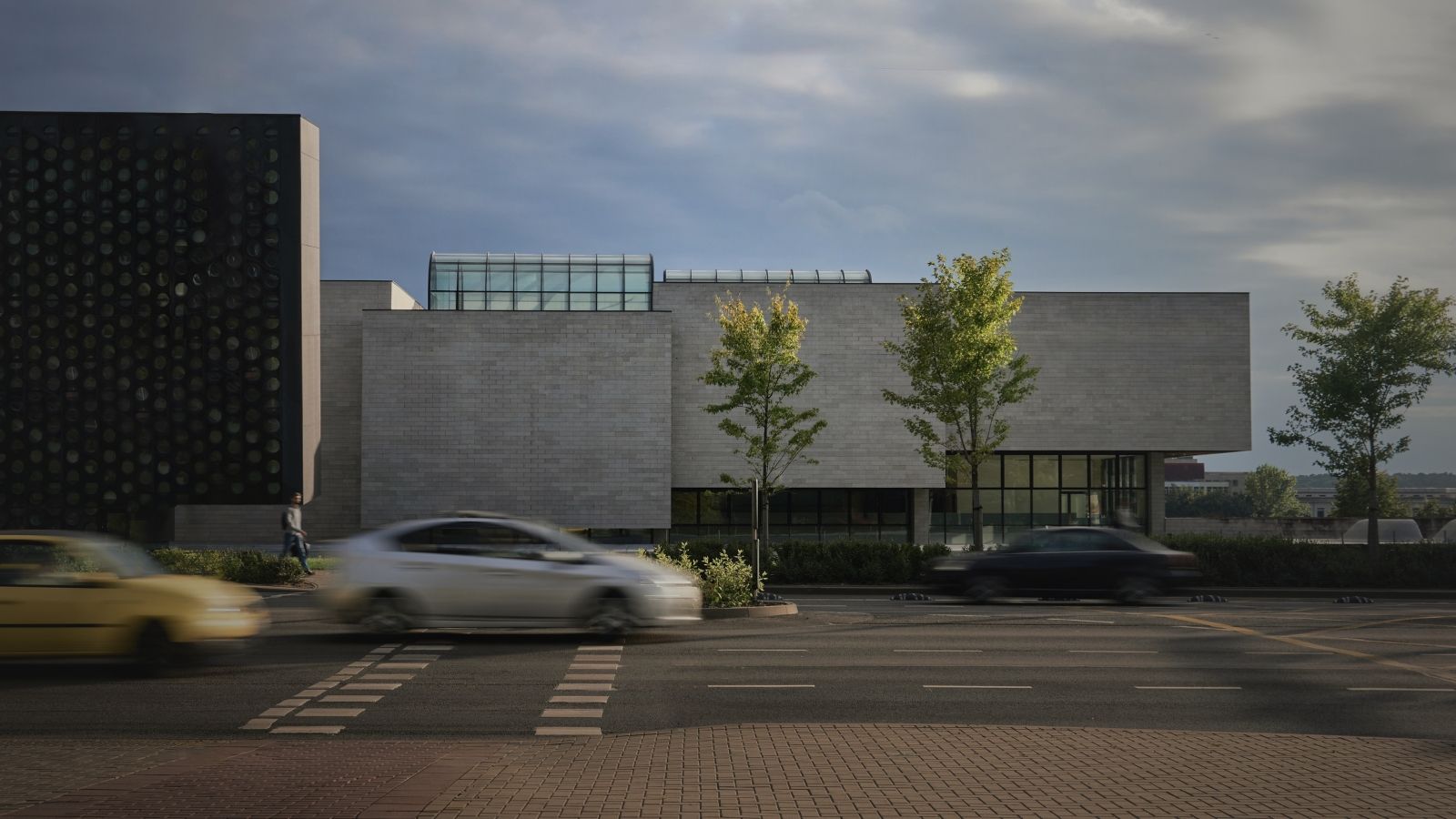The Emirate’s ambitious vision for a green future relies on one groundbreaking initiative: Estidama.
Meaning “sustainability” in Arabic, Estidama isn’t just a certification system—it’s a practical framework, and a promise by the construction industry to build better in the UAE. The program has already set ambitious targets, including reducing energy usage by 31%, water usage by 37%, and diverting 65% of construction waste from landfills.
At Stonehaven, we believe in digging deeper into what drives change in construction, and Estidama is a prime example. This article deciphers the Pearl Rating System, explores its significance, and highlights why it’s more than just another green building tool.
The Origins of Estidama
Estidama was created in 2010 as part of the Abu Dhabi Vision 2030, the Emirate’s roadmap for sustainable growth. Recognising the challenges of a region with extreme heat, scarce water, and a reliance on energy-intensive cooling systems, the Abu Dhabi Urban Planning Council (UPC) developed a system that could work—in this climate, for this culture.
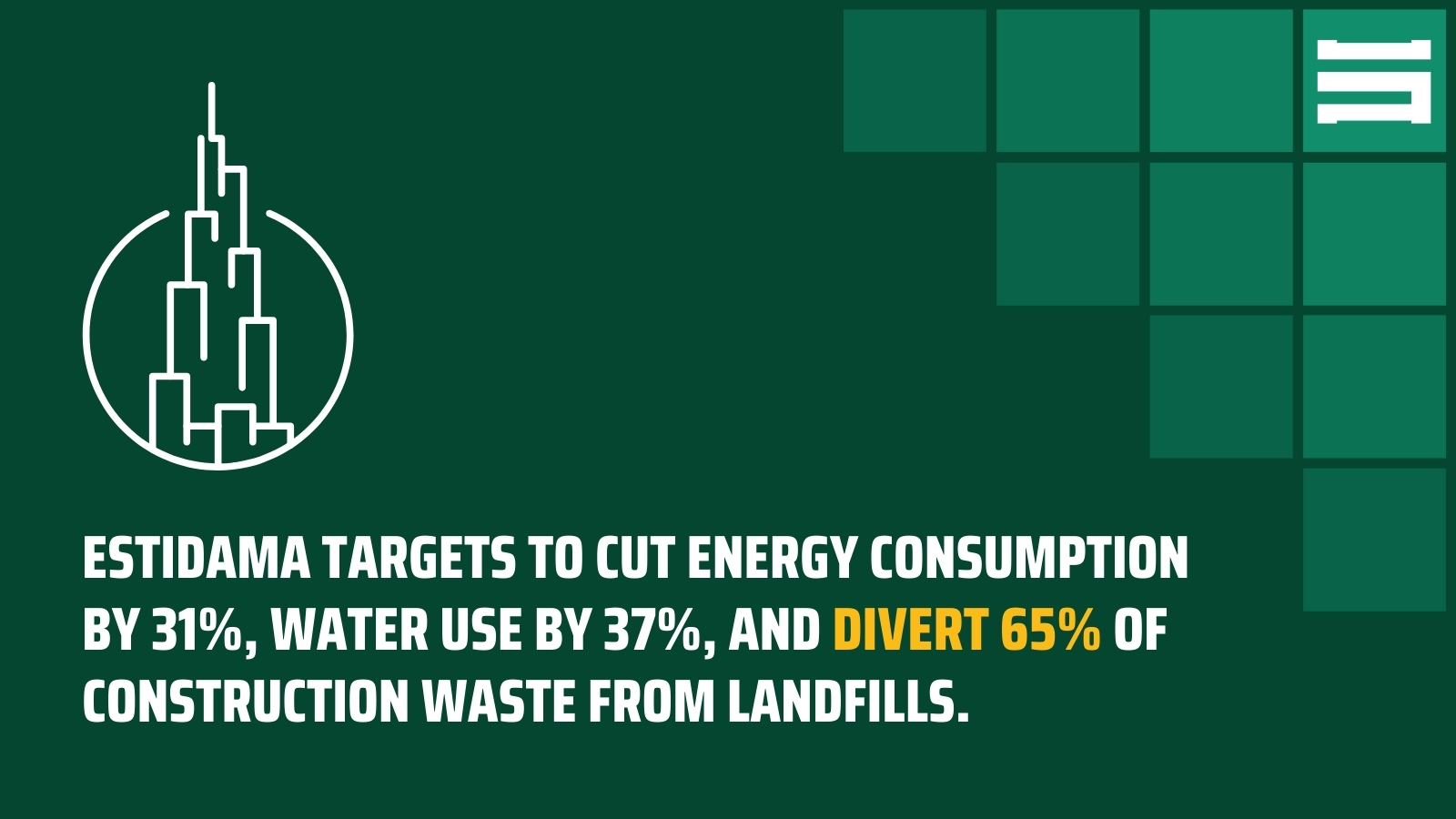
Unlike universal frameworks such as LEED, Estidama was designed specifically for the Middle East. It goes beyond carbon footprint reduction, addressing the social and cultural aspects of urban development. In a way, it’s not just about green buildings—it’s about sustainable communities. Think of it as building with future generations in mind.
The Pearl Rating System: How It Works
The Pearl Rating System (PRS) is Estidama’s assessment framework. It evaluates buildings, communities, and villas across their entire lifecycle—from design to construction to operation. The PRS assigns ratings from 1 Pearl (the minimum) to 5 Pearls (a heavy achievement for only the most sustainable projects).
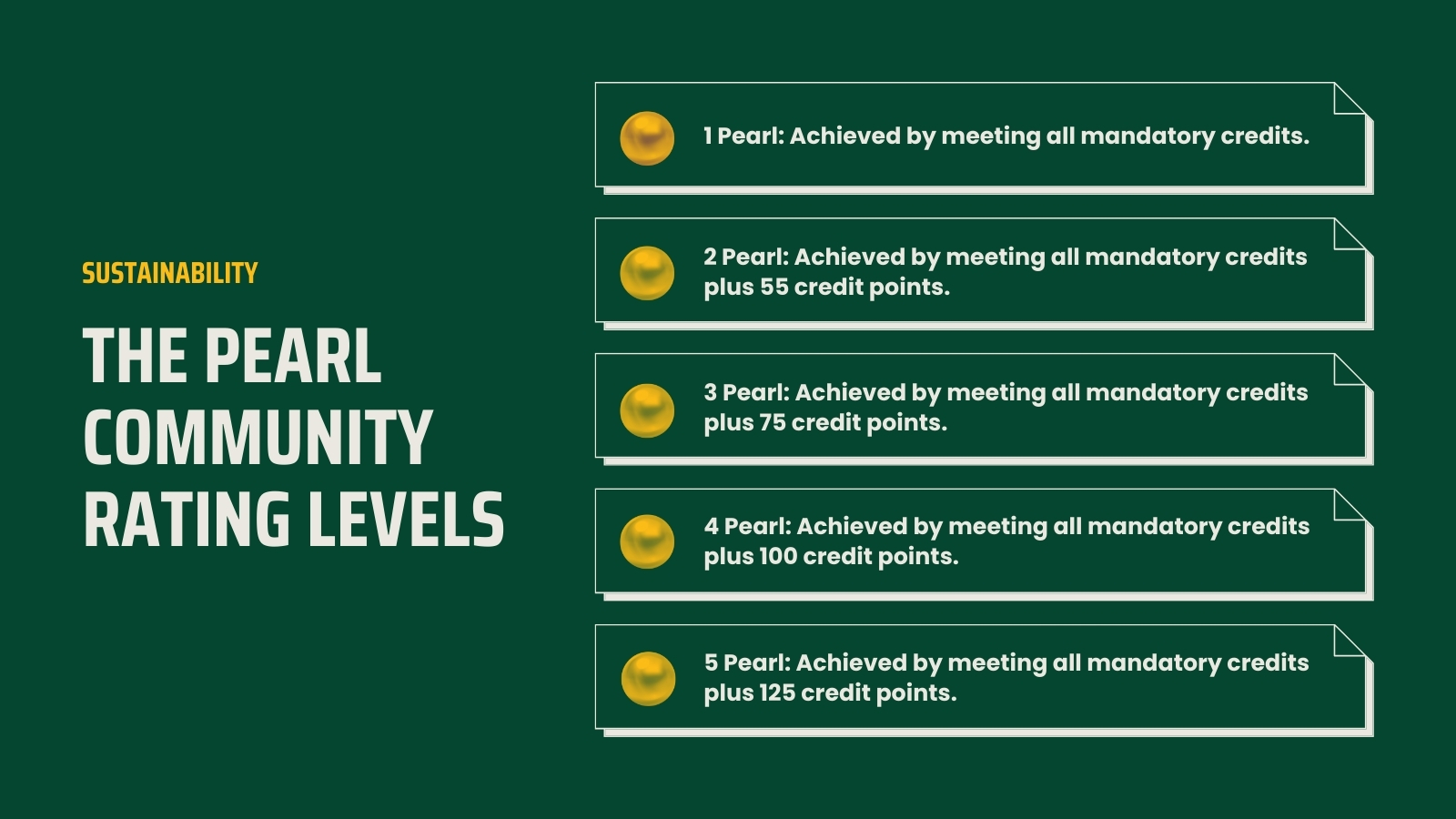
Within each section there are mandatory and optional credits and credit points are awarded for each optional credit achieved. To achieve a 1 Pearl rating, all the mandatory credit requirements must be met. To achieve a higher Pearl rating, all the mandatory credit requirements must be met along with a minimum number of credit points.
What makes the PRS stand out? It’s the comprehensive nature. Sustainability isn’t just one thing—it’s everything. The PRS takes this to account, dividing its assessment into seven categories, each tackling a specific aspect of sustainable development.
The Seven Pillars of the Pearl Rating System
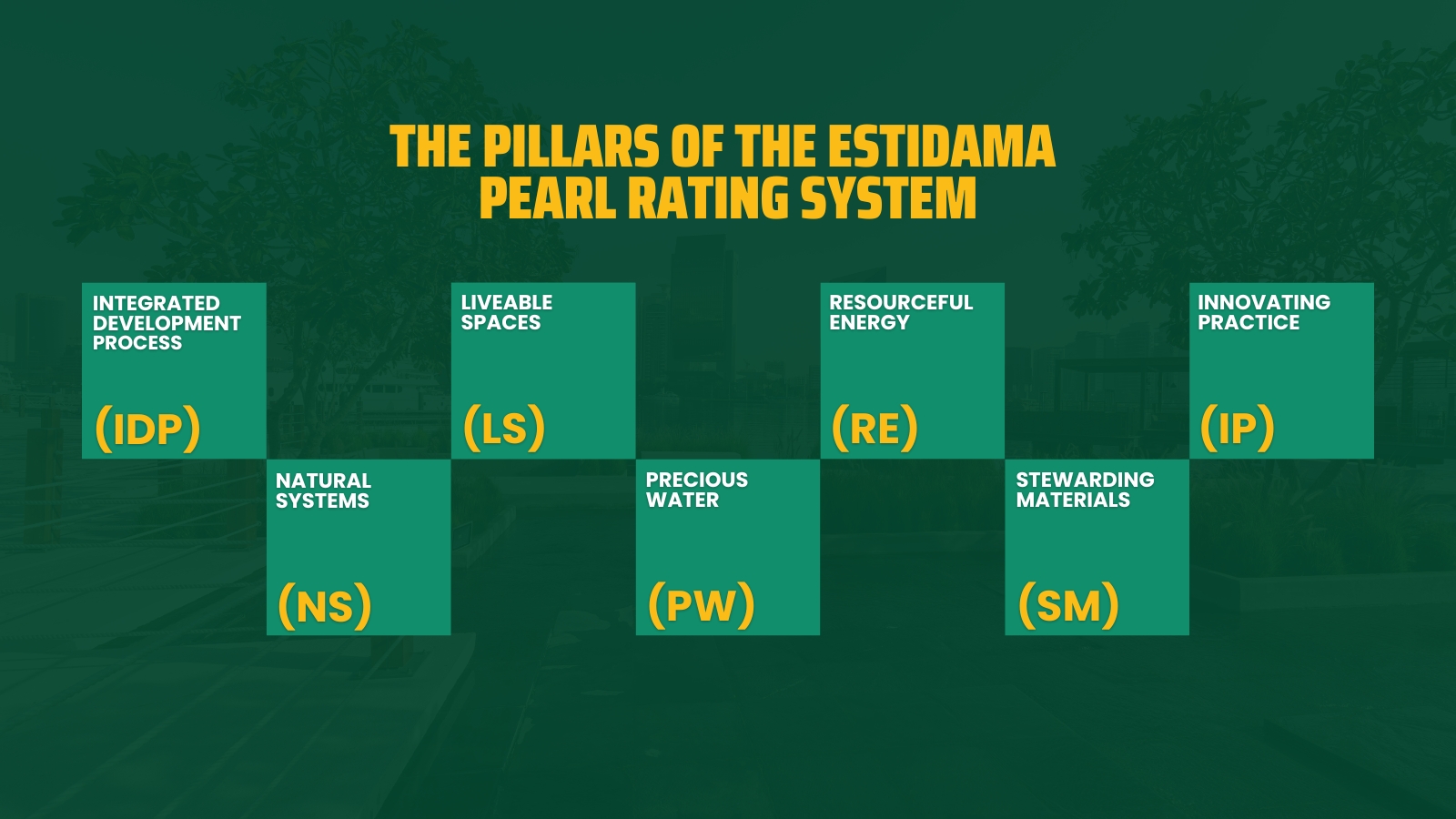
Source - https://www.dmt.gov.ae/-/media/Project/DMT/DMT/E-Library/0001-Manuals/PRRS/PRRS-Version-10.pdf
1. Integrated Development Process (IDP)
Sustainability starts on paper. This category ensures that everyone—architects, engineers, developers—works together from day one. Collaboration isn’t just encouraged; it’s required. The result? Fewer oversights and a more cohesive vision for sustainability.
2. Natural Systems (NS)
The desert might seem barren, but it’s teeming with ecosystems. This category focuses on conserving and restoring natural habitats. Think planting native trees, designing with biodiversity in mind, and avoiding harm to Abu Dhabi’s unique landscapes.
3. Liveable Spaces (LS)
Buildings don’t exist in isolation. Liveable Spaces ensures that projects prioritise quality of life—whether through green public areas, pedestrian-friendly design, or spaces that encourage community interaction.
4. Precious Water (PW)
Water conservation isn’t a choice here; it’s a necessity. This pillar emphasises reducing water demand through technologies like greywater recycling, low-flow fixtures, and landscaping that doesn’t guzzle down water.
5. Resourceful Energy (RE)
Abu Dhabi’s climate puts immense pressure on energy systems. This category addresses efficiency in cooling, lighting, and renewable energy adoption. Solar panels? Check. Smart energy grids? Double-check.
6. Stewarding Materials (SM)
Construction is resource intensive. SM encourages developers to think critically about the materials they use, favouring sustainable, recycled, and locally sourced options wherever possible.
7. Innovating Practice (IP)
This is where creativity comes in. Projects that think outside the box—whether through cutting-edge tech or groundbreaking design solutions—are rewarded for their efforts.
How Estidama Principles Influence Construction Practices
Estidama, Abu Dhabi’s sustainability framework, integrates environmental, economic, social, and cultural considerations into the built environment as an evolving initiative that continuously adapts to new sustainability challenges, technological advancements, and regulatory updates.
As such, the guidelines and requirements outlined here reflect the available information at the time of writing. Construction professionals and stakeholders are encouraged to consult official sources, such as the Abu Dhabi Urban Planning Council and the Estidama website, for the most up-to-date regulations and best practices.
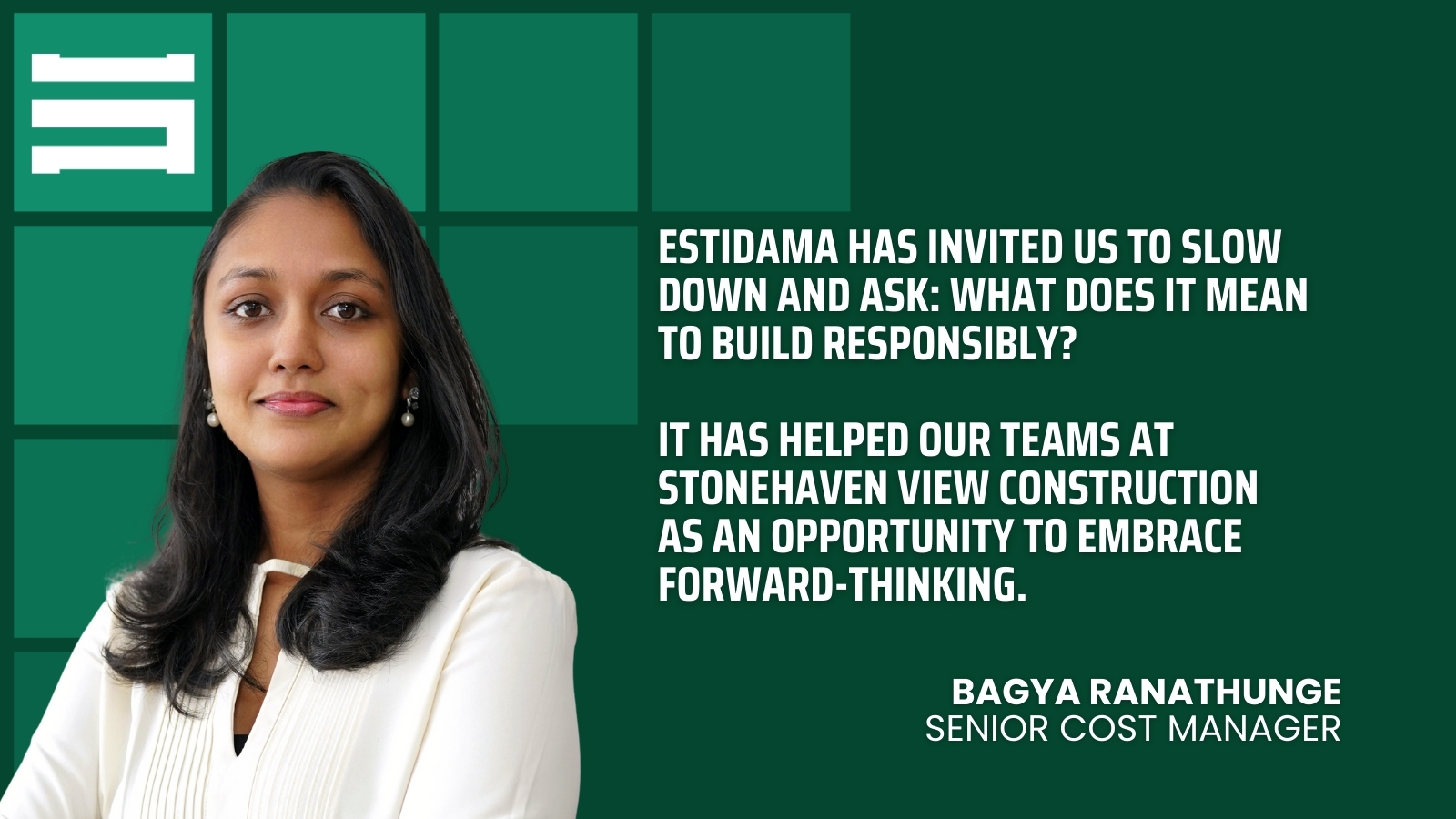
Below are the key intersections between Estidama’s Pearl Rating System and construction practices.
1. Sustainable Project Planning & Development
-
Construction projects must incorporate sustainability from the early planning stages through Integrated Development Process (IDP) principles.
- A multi-disciplinary approach ensures environmental, social, and economic objectives remain consistent from design to execution.
- Developers are required to implement a structured transition strategy, ensuring sustainability measures are upheld through construction, handover, and operation.
2. Environmental Management During Construction
- Projects must develop a Construction Environmental Management Plan (CEMP) that meets Abu Dhabi’s regulatory standards.
- Contractors must adopt eco-friendly construction methods to reduce air pollution, waste, and resource consumption.
- Construction firms with ISO 14001 or EHSMS certification are given preference, as they align with Estidama’s focus on sustainability compliance.
3. Cost-Efficient & Sustainable Building Designs
- Life Cycle Costing (LCC) is an essential tool for assessing long-term economic and environmental benefits of construction decisions.
- Projects must evaluate material efficiency, energy consumption, and operational performance before construction begins.
- Regular updates to costing models are required throughout the project to ensure financial and environmental sustainability.
4. Waste Reduction & Recycling in Construction
- Construction sites must implement a structured waste management strategy to minimize environmental impact.
- A 50% minimum recycling rate for construction waste is required, with incentives for projects that achieve 60-70% waste diversion.
- Sustainable deconstruction methods are encouraged to reduce landfill contributions and support circular economy principles.
5. Responsible Sourcing of Materials
- Construction projects must use certified sustainable timber (e.g., FSC or PEFC-certified) for at least 50% of all wood products.
- The use of locally sourced and recycled materials is promoted to reduce carbon footprint and support regional industries.
- The selection of construction materials follows a whole-life cycle assessment, considering long-term sustainability rather than short-term cost savings.
6. Worker Welfare & Ethical Labor Practices
- Ensuring safe and humane living conditions for construction workers is a key social sustainability requirement.
- Worker accommodations must include adequate hygiene facilities, healthcare, recreation areas, and proper shelter.
- Employers are responsible for annual inspections of housing facilities and establishing a Workers’ Welfare Committee to address concerns.
7. Energy, Water & Waste System Commissioning
- Infrastructure for energy, water, and waste management must undergo independent testing before project completion.
- Efficient cooling, water recycling, and energy conservation strategies are required to meet Estidama’s Resourceful Energy and Precious Water criteria.
- Projects must demonstrate that sustainability commitments made in the design phase are fully realised in the completed construction.
8. Sustainability Training & Awareness in Construction
- On-site workers and construction teams must undergo sustainability awareness training to ensure compliance with Estidama guidelines.
- Educational tools such as signage, digital dashboards, and sustainability reports are used to reinforce best practices.
- Continuous engagement ensures that both workers and end-users contribute to a more sustainable built environment.
How To Certify Your Project Under the Pearl Rating System?
The Pearl Rating System (PRS) follows a structured certification process to ensure sustainability is embedded at every stage of a building’s lifecycle. Projects must complete three key phases to achieve a Pearl Rating:

1. Design Phase: Establishing Sustainability Goals
At this stage, a Pearl Qualified Professional (PQP) works closely with the project team to incorporate PRS sustainability criteria into the building’s design. Securing a Pearl Design Rating (PDR) is a prerequisite for obtaining building permits, ensuring that sustainability is considered from the outset.
2. Construction Phase: Implementing Sustainable Practices
Once construction begins, the project is assessed to verify that design-stage sustainability commitments are effectively executed. Compliance with PRS standards leads to the Pearl Construction Rating (PCR), which is required to obtain the final completion certificate.
3. Operational Phase: Measuring Real-World Performance
Sustainability doesn’t end when construction is complete—project owners must deliver on their promises. The Pearl Operational Rating (POR) evaluates the building’s actual performance after occupancy. To qualify, a project must operate for at least two years and reach a minimum occupancy of 80% to demonstrate measurable sustainability outcomes.
This three-stage certification ensures that sustainability is not just a design principle, but a fully integrated, long-term commitment in every project.
Case Study of Estidama
UAE is proof that sustainability and modernity can go hand in hand. We educate our clients on the benefits of sustainable construction methods, including solar solutions, water reduction systems, and eco-friendly materials. One of our recent projects, the Jetex Al Bateen VIP Airport Lounge in the UAE, has been awarded the Estidama 3 Pearl Rating.
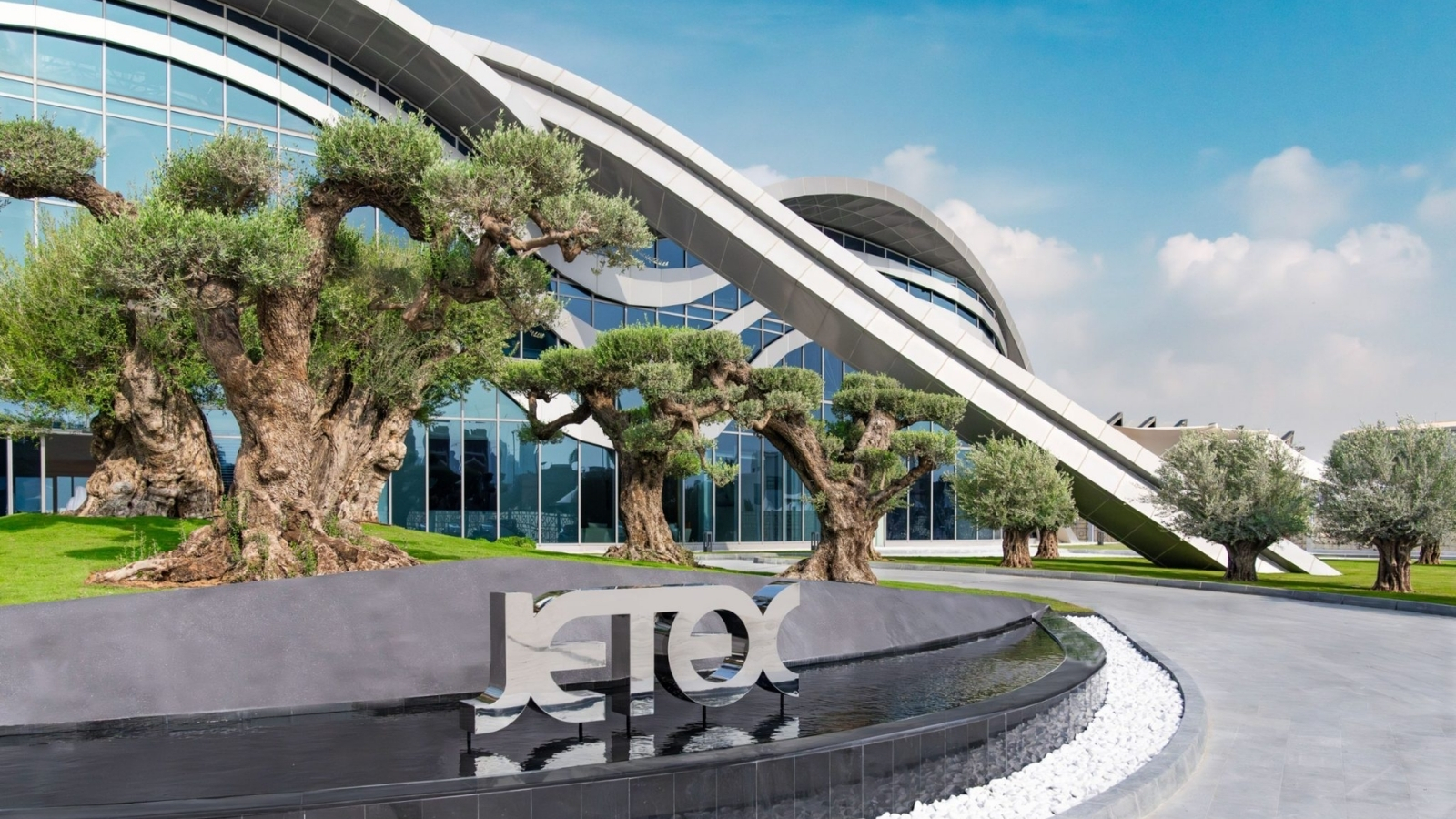
Conclusion: Building with Purpose
Estidama and its Pearl Rating System represent more than a sustainability checklist. They’re a call to action—a reminder that building for the future requires us to think differently today. For developers, architects, and contractors, Estidama is both a challenge and an opportunity: to innovate, to inspire, and to leave a legacy that endures.
At Stonehaven, we’re excited to see how Estidama continues to shape our built environment in the upcoming years. Because in the end, sustainability isn’t just about saving the planet or your region—it’s about creating spaces that fully enrich our daily lives and stand the test of time.
Ready to dive into more industry insights? Stay tuned for the next edition of our Stonehaven Deciphers series.

